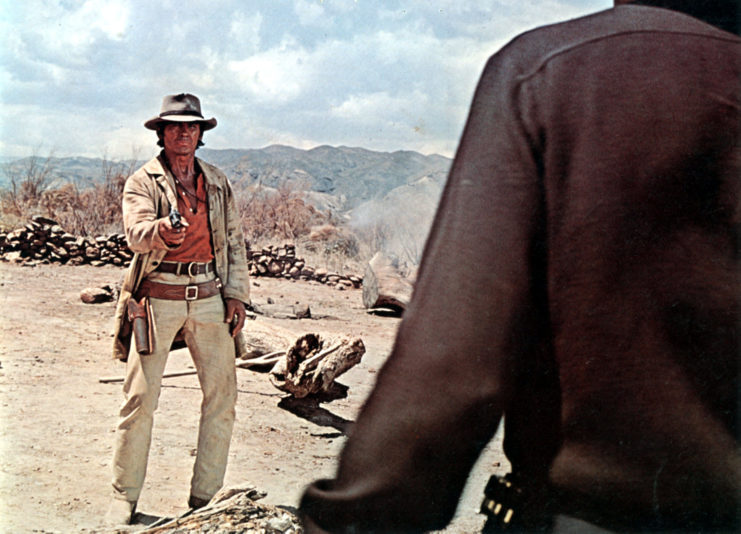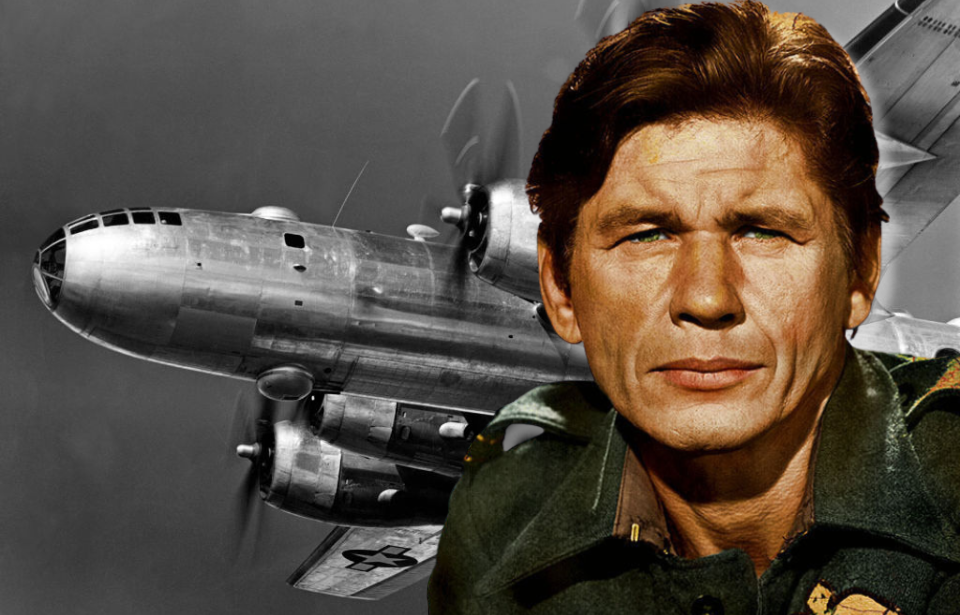Charles Bronson rose to fame by portraying tough, resilient characters that mirrored his own unbreakable spirit. After surviving a difficult childhood and working for years in the coal mines, he joined the US Army Air Forces (USAAF) during World War II, serving as an aerial gunner aboard a Boeing B-29 Superfortress.
Early life in the coal mines of Pennsylvania

Charles Bronson, originally named Charles Dennis Buchinsky and born on November 3, 1921, was the 11th child in a financially struggling Roman Catholic family of Lithuanian descent. At first, he didn’t speak English, but by his teenage years, he had become fluent in Russian, Lithuanian, English, and Greek.
After his father passed away, Bronson, at just 10 years old, began working in the coal mines of Pennsylvania. He earned only a dollar for every ton of coal he mined, with all of his earnings going to help support his family.
Entering the US Army Air Forces (USAAF)

In 1943, after working for 12 years in the mines, Charles Bronson enlisted in the US Army Air Forces.
He began his military career with the 760th Flexible Gunnery Training Squadron before becoming an aerial gunner aboard a Boeing B-29 Superfortress. Assigned to the 61st Bombardment Squadron, 39th Bombardment Group stationed in Guam, he flew 25 combat missions over Japan, many of which were highly dangerous.
During one of these missions, Bronson sustained injuries to his arms and was awarded the Purple Heart for his wounds in combat. He completed his three years of service in 1946.
Charles Bronson adapted well to military life

Though many found the standards of military life challenging, Charles Bronson viewed them as indulgent, saying, “I never had it so good as when I entered the Army. Men were complaining around me. But I was eating and sleeping well, and I thought: ‘Jeez! This is great!’ For me, being drafted was like having a fairy godfather change me into a prince.”
After Bronson achieved fame as a Hollywood star – a genuine rags-to-riches story – news sources scrutinized his military background. Some suggested he had only served as a delivery truck driver for the 760th Mess Squadron in Arizona. However, his World War II comerades validated his role as a nose gunner on a B-29.
Additionally, records have been found confirming his service in Guam as a B-29 crew member, including a September 1945 roster from the 61st Squadron that lists his name.
Post-World War II

Following his military service, Charles Bronson used his GI Bill funds to study art and enrolled in the Pasadena Playhouse in sunny California. However, this career shift didn’t go as smoothly as he hoped, leading him to take on a series of odd jobs. At one point, he shared an apartment with fellow aspiring actor Jack Klugman.
Bronson’s initial roles were small and uncredited, and he was still using his birth name, Charles Buchinsky. It wasn’t until he played Igor in 1953’s House of Wax that audiences and major Hollywood studios began to recognize his talent.
Beginning in the late 1940s and lasting through much of the 1950s, the United States faced a widespread fear of Communism, known as the Second Red Scare. After a number of Soviet spies were uncovered in seemingly secure positions, the nation began actively pursuing and halting Communist activities.
In 1954, he changed his name to “Charles Bronson” to avoid the unwanted attention his Eastern European-sounding surname might attract from the House Un-American Activities Committee (HUAC).
Charles Bronson’s career eventually gained steam

Charles Bronson’s career gained steam in the 1950s, and by the ’70s he was considered one of Hollywood’s leading men, earning $1 million per film. Among his most popular movies were The Great Escape (1963), Once Upon a Time in the West (1968) and Death Wish (1974). These roles saw him starring alongside some of Tinsel Town’s finest, including Steve McQueen and Henry Fonda.
While a beloved star, Bronson’s past remained with him, and for much of his life he suffered from bouts of claustrophobia due to his time in the coal mines and aboard B-29 bombers. Bronson’s final role was as Paul Fein in the Family of Cops television movie franchise, of which there were three films.
Want War History Online‘s content sent directly to your inbox? Sign up for our newsletter here!
He retired from acting following a hip replacement, and in the later years of his life suffered from deteriorating health. In 2003, at the age of 81, he passed away and was interred at Brownsville Cemetery in West Windsor, Vermont.
